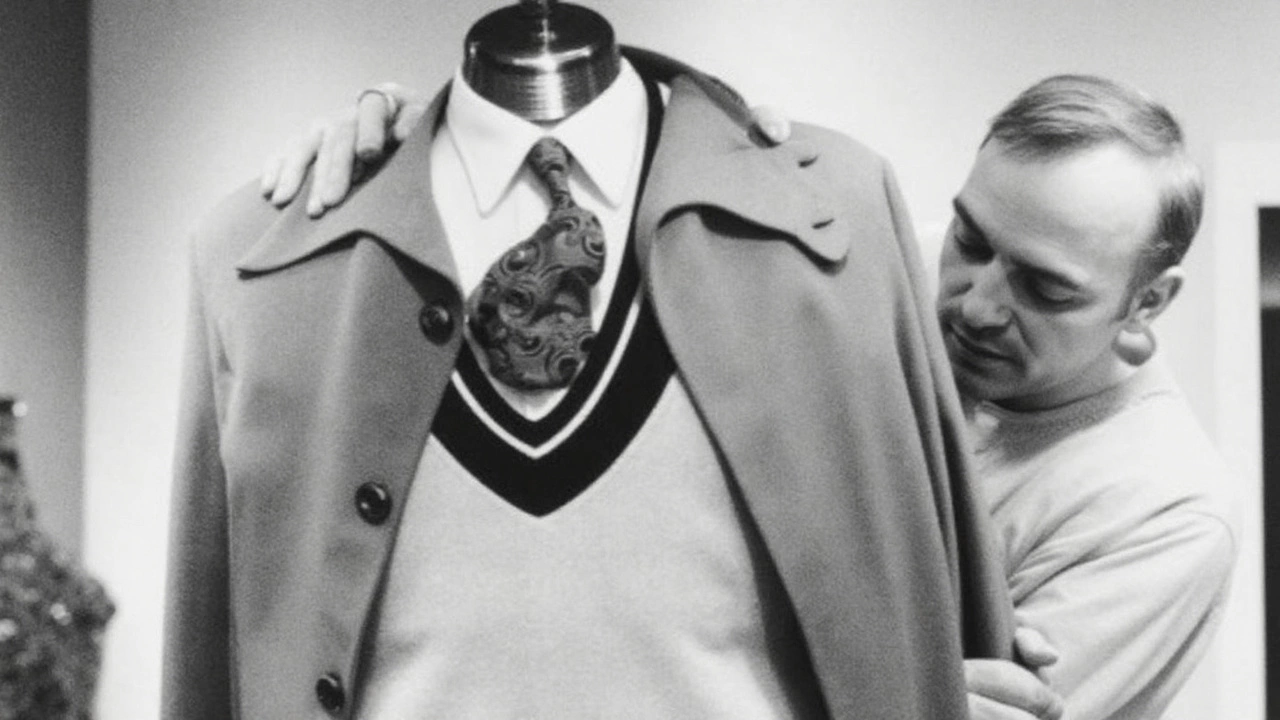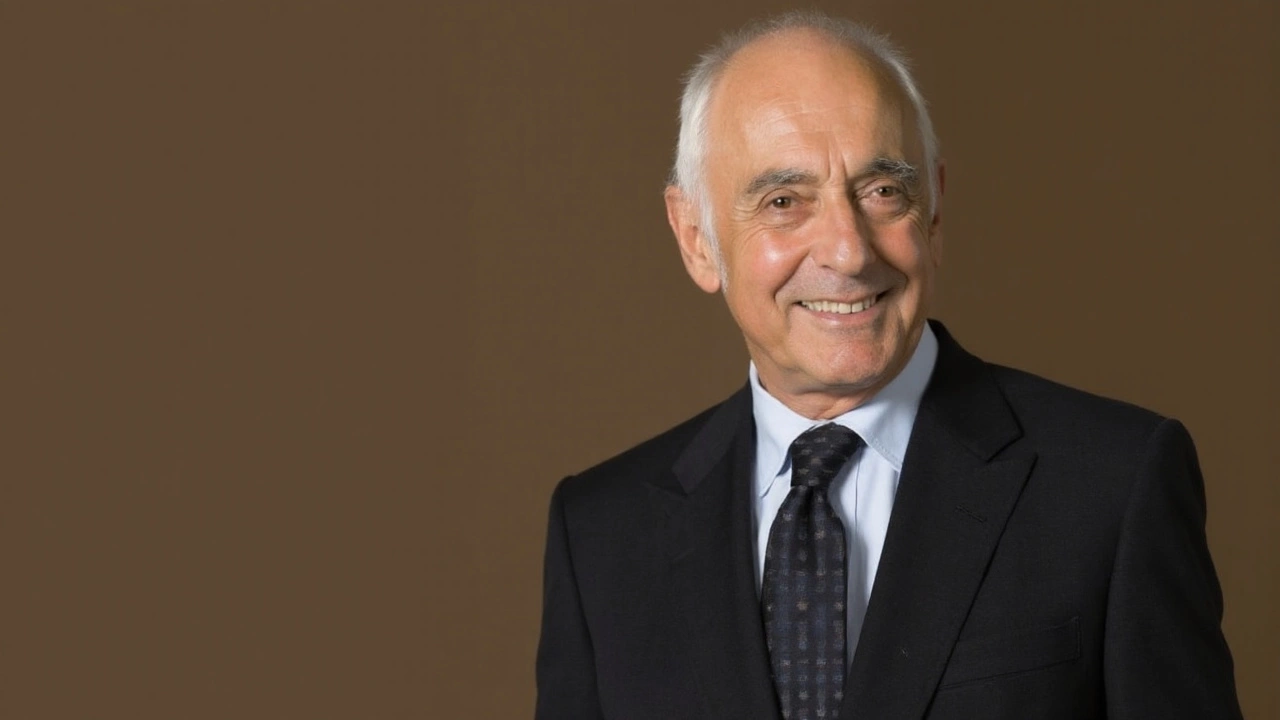By Hendrix
MILAN — Giorgio Armani, the architect of modern power dressing and one of the last independent titans in luxury, has died at 91. The Armani Group said he passed away peacefully at home on Thursday, September 4, 2025, surrounded by loved ones. The company called him its creator and driving force, saying he worked to the end on collections and future projects.
His death lands just weeks before the fashion house was set to mark its 50th anniversary during Milan Fashion Week. A public funeral chamber will be open at the Armani Teatro on Saturday and Sunday, September 6–7, followed by a private service.
The news closes an extraordinary life that moved fashion away from stiff formality into quiet confidence. Armani’s unstructured jackets, fluid trousers, and calm, urban palette rewired how men and women dress at work and on the red carpet. He made soft tailoring mainstream, gave the world “greige” (his blend of gray and beige), and sold the idea that elegance doesn’t need to shout.
A life that reshaped fashion
Armani was born on July 11, 1934, in Piacenza, a city south of Milan. He initially studied medicine at the University of Milan, then served in the military. After that, he found a job dressing windows at La Rinascente, the Milan department store. That detour led him into design roles and, in the 1960s, to menswear at Nino Cerruti. There he learned how to play with structure and drape, lessons he would later push to the edge.
He launched his label in 1975 with Sergio Galeotti, his business and romantic partner. The first collection included an unlined jacket in muted tones that felt radical in a decade still tied to rigid tailoring. Buyers noticed. The look spread, first across Italy, then to the United States and Japan. Armani became a byword for polished ease.
Hollywood supercharged his rise. The sleek wardrobe he created for Richard Gere in “American Gigolo” (1980) helped cement the Armani suit as a cultural symbol—sensual, low-key, and modern. Through the 1980s and 1990s, his tuxedos and gowns became red-carpet uniform for actors and musicians who wanted glamour without glitter overload. He dressed stars at the Oscars, Cannes, and the Emmys, and his minimalist eveningwear set the tone for a generation.
He did the same for women at work. Armani’s softly tailored jackets, clean shoulders, and neutral colors gave a new shape to office wear during the corporate boom. The clothes projected calm authority rather than power by force—an attitude that stuck even as he constantly updated the silhouette.
As the brand grew, Armani kept control. While rivals sold to conglomerates or went public, he stayed private and ran his company from Milan. That independence defined his image: steady, consistent, and loyal to the house code. He refined, rather than chased trends. The result was a brand that customers trusted—and that outlived fashion cycles.
Over time he built an ecosystem that reached far beyond the runway. The Armani name covered clothing at multiple levels, fragrances, eyewear, watches, hotels, interiors, even chocolates and flowers. At the time of his death, the empire was valued at over $10 billion, and Forbes counted him among the world’s top billionaires.
Key milestones in the house’s growth:
- 1975: Giorgio Armani founded in Milan; early focus on deconstructed jackets and neutral palettes.
- 1980: “American Gigolo” puts the Armani suit on the global map.
- 1981: Emporio Armani launches, bringing the look to a wider audience.
- 1991: A|X Armani Exchange debuts, targeting a younger, urban customer.
- 2000s: Fragrances like Acqua di Giò and Sì become global bestsellers.
- 2005: Armani Privé couture launches in Paris, proving minimalism can be haute.
- 2010: Armani Hotel Dubai opens, expanding into hospitality.
- 2015: Armani/Silos museum opens in Milan for the brand’s 40th anniversary.
- 2010s–2020s: EA7 Emporio Armani grows in sportswear; the house outfits Italy’s Olympic teams.
His shows often told the same story in a hundred nuanced ways: clean lines, quiet surfaces, movement over ornament. He loved dark velvet for evening, a glint of crystals that never tipped into excess, and daywear that felt luxurious without trying too hard. Even in couture, the result was controlled lightness—jackets that curved around the body, gowns that skimmed rather than clung.
Armani’s reach into popular culture can’t be overstated. From television anchors to Wall Street bankers to touring musicians, his look traveled seamlessly across professions and continents. The brand’s signage—simple black-and-white, the eagle logo for Emporio—became a language of its own in cities from Milan to Shanghai.
Behind the spotlight, Armani kept his private life largely his own. He spoke candidly at times about relationships with both men and women. Galeotti, his partner in life and business, died in 1985 from AIDS-related complications. Armani often said he still traveled with Galeotti’s photograph and felt his presence in the studio—a thread of loyalty that matched the way he ran his house.
His health had been watched closely this year. In June, he skipped the menswear previews for Spring-Summer 2026—his first absence from Milan Fashion Week in about five decades. The no-show underlined how present he’d always been. He famously kept a tight calendar and often worked from dawn, reviewing fabric boards, edits, and fittings himself.

What happens to the Armani empire now
Armani planned for this moment. For years he signaled that leadership would pass to trusted insiders. Leo Dell’Orco, the longtime head of menswear, and Silvana Armani, his niece who leads womenswear, have been named as key figures in the brand’s future. That continuity matters at a company where the founder’s taste is the product.
The Armani Group is privately held and structured to preserve its independence. A foundation created by Armani is expected to guide both philanthropy and corporate governance, directing profits to charitable projects while keeping the brand stable. That setup could shield the company from takeover attempts and help maintain the design language that customers expect.
What does that look like on the ground? Expect the runway to stay on course—precise tailoring, feather-light dresses, neutral palettes—while the business continues to lean on proven pillars: fragrance and beauty, eyewear, and the bridge lines that deliver volume. Hotels in Dubai and Milan, homeware, and the Armani/Silos cultural space will remain important to the lifestyle vision he built.
The memorial at the Armani Teatro this weekend will give the public a chance to say goodbye in the building that has hosted many of his shows. The timing is heavy: Milan Fashion Week is approaching, and the house had planned to celebrate 50 years. Industry watchers expect the celebration to double as a tribute, with archival looks and a focus on the signature jacket that started it all.
Tributes began flowing within hours from designers, editors, and actors who wore his work. Many credited him with proving that restraint could be as powerful as spectacle. Others recalled fittings where he would quietly adjust a shoulder line or hem and transform the entire look. For insiders, that was his genius—small decisions that changed how a garment lived on the body.
The numbers tell their own story. A single name stretched across ready-to-wear, couture, accessories, beauty, sportswear, hospitality, and home design—rare in an industry that often hands those pieces to different owners. He built it with patience, kept manufacturing anchored in Italy, and protected quality as the brand scaled.
In the end, Armani’s real legacy is visible on city streets: the softened suit, the easy coat, the belief that elegance is felt more than announced. Millions who never bought a runway piece still dress in his image: quiet colors, fluid shapes, nothing extra. That impact will outlast awards and sales figures.
For Milan, his death is personal. He helped put the city at the center of the fashion map in the late 1970s and early 1980s, alongside fellow Italian houses that took on Paris and New York. The trade shows, the studios, the model apartments, the showrooms on Via Bergognone—his footprint is part of the city’s fabric.
The house now moves forward in the way he preferred: with discipline. Collections are already mapped seasons ahead. Teams in menswear and womenswear have worked within his vocabulary for years. Beauty and fragrance will keep driving awareness. Retail will remain selective. Expect tributes across upcoming campaigns and store windows, but not a wholesale change of course.
Armani once said that style is a balance between instinct and restraint. He applied that to business as much as to clothes—growing without rushing, diversifying without diluting. That’s why the brand he built is likely to stay steady in the months ahead, even as the industry says goodbye to the man who taught it how to be quietly sure of itself.
